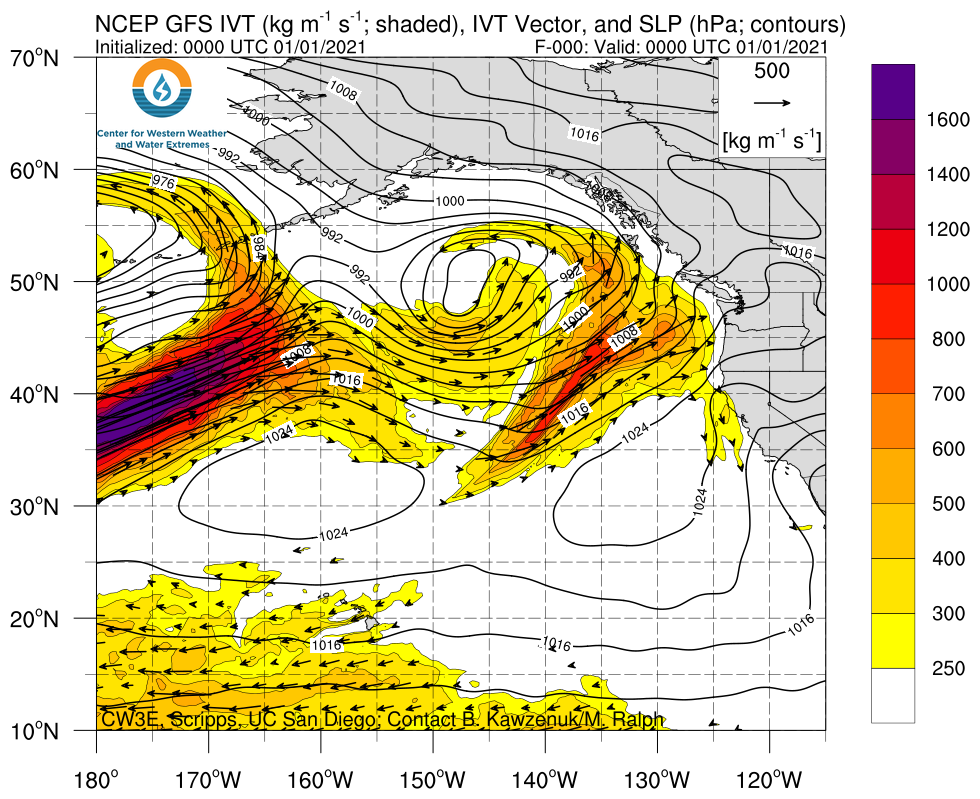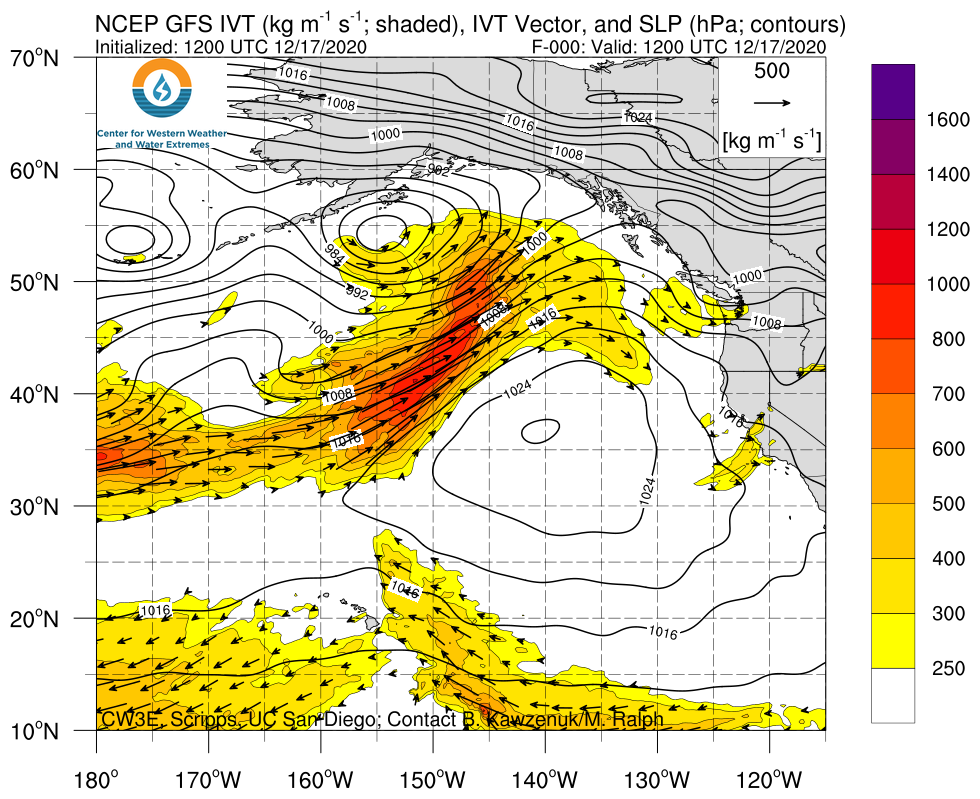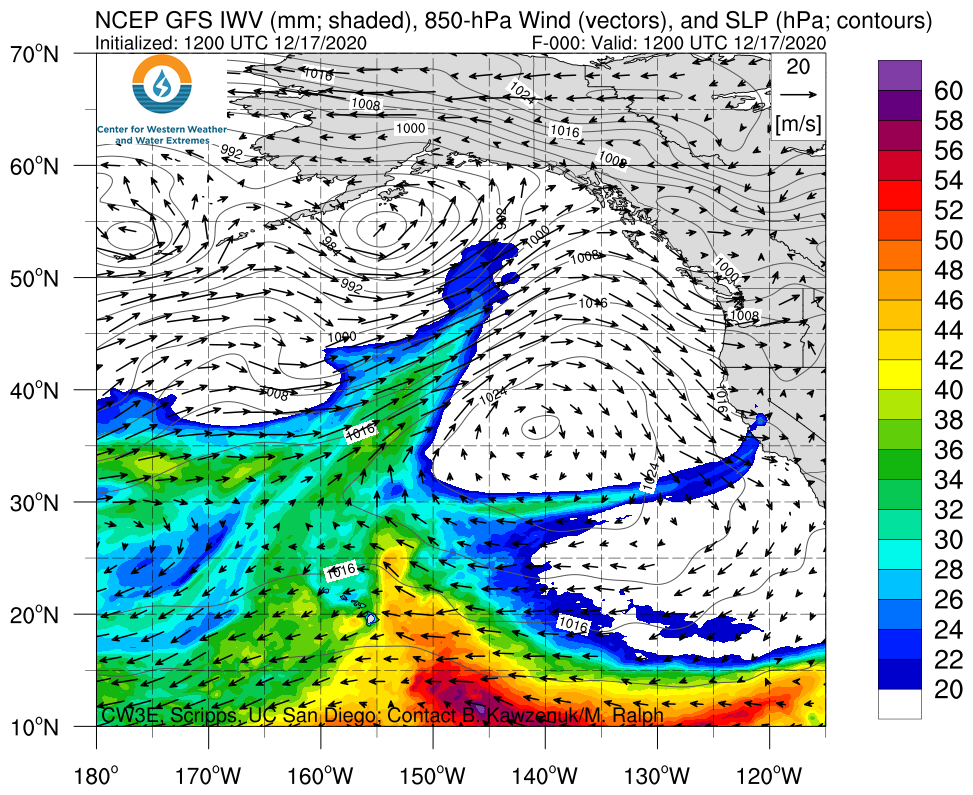CW3E Publication Notice
The Circulation Response of a Two-Dimensional Frontogenetic Model to Optimized Moisture Perturbations
February 8, 2021
Reuben Demirdjian, a CW3E PhD graduate who is currently a Postdoctoral Scholar at the Naval Research Laboratory, recently published a paper in the Journal of the Atmospheric Sciences, along with co-authors and CW3E affiliates Richard Rotunno of the National Center for Atmospheric Research, Bruce D. Cornuelle of Scripps Institution of Oceanography, and Carolyn A. Reynolds, and James D. Doyle of the Naval Research Laboratory (Demirdjian et al. 2021). This study contributes to the goal stated in CW3E’s 2019-2024 Strategic Plan to support modeling capabilities for the western United States by developing and testing coupled weather, ocean, and hydrologic modeling systems to improve prediction of precipitation and streamflow.
The study uses an idealized two-dimensional moist semigeostrophic model to assess the role of moisture small moisture perturbations on developing atmospheric rivers. The objectives are to (i) investigate the dynamics responsible for moisture-perturbation growth, and (ii) quantify the relation between the moisture-perturbation amplitude and the strength of the circulation response. Results show that adding relatively small amounts of moisture can increase frontogenesis, strengthen the transverse circulation, intensify the low-level potential-vorticity (PV) anomaly, and strengthen the low-level jet (LLJ). The progression of physical processes responsible for the nonlinear effect of moisture perturbations on the forecast is (in order) (1) jet/front transverse circulation; (2) moisture convergence ahead of the front; (3) latent heating at mid- to low elevations; (4) reduction in static stability ahead of the front; (5) strengthening of the transverse circulation (Figure 1). Together, these physical processes represent a pathway by which small perturbations of moisture can have a strong impact on a forecast involving midlatitude frontogenesis. The physical processes outlined in Fig. 1 demonstrates that the frontogenetic circulation can respond to moisture perturbations by increasing along front circulations. This advance in our understanding of the dynamics associated with the growth of moist perturbations has led to a more complete understanding of AR dynamics and forecast challenges. This physical argument of a strong precipitation forecast dependence on the initial-condition moisture content highlights the importance of campaigns like Atmospheric River Reconnaissance in regions like the Northeast Pacific that otherwise would have significant gaps without vertically resolved moisture data.
Figure 1: Figure 13 in Demirdjian et al., 2021: A schematic representation of the important physical processes discussed in this study. The potential temperature (gray contours), latent heating (LH; thick red oval), along-front geostrophic wind (color shades with increasing value from orange to red), and the ageostrophic streamfunction (transverse circulation; large black circle). The direction of the transverse circulation is denoted by the black arrows, with successively smaller arrows indicating regions of convergence. The dashed gray lines denote changes to the potential temperature resulting from latent-heating effects. The order of processes is labeled numerically, with dotted black arrows connecting them for continuity. The Brunt–Väisälä frequency before and after the latent heating is measured by N2 and N2s, respectively.
Demirdjian, R., R. Rotunno, B. D. Cornuelle, C. A. Reynolds, and J. D. Doyle, 2021: The Circulation Response of a Two-Dimensional Frontogenetic Model to Optimized Moisture Perturbations. J. Atmos. Sci., 78, 459-472, https://doi.org/10.1175/JAS-D-20-0102.1.








































































